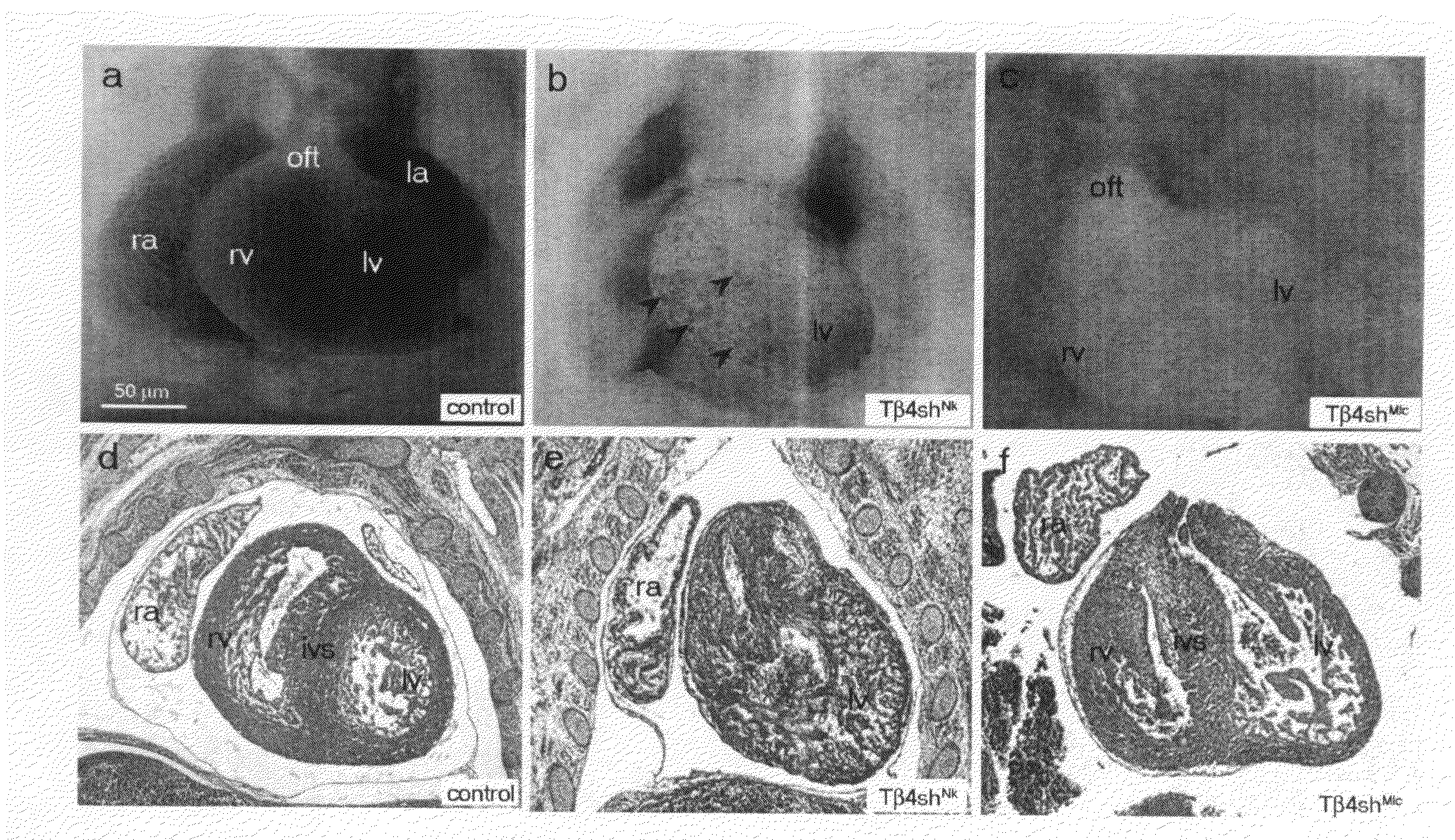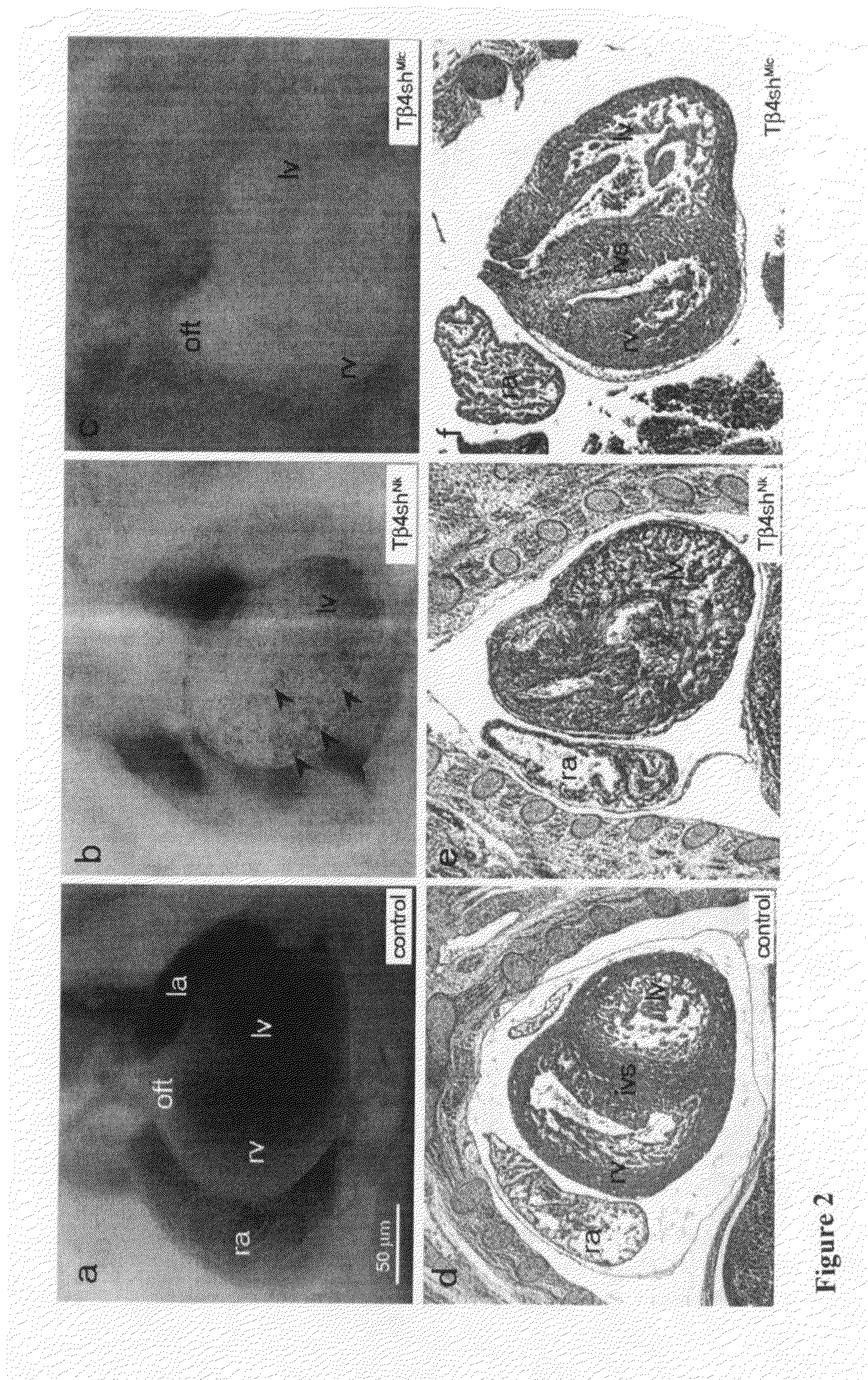Cardiac progenitor cells
- Summary
- Abstract
- Description
- Claims
- Application Information
AI Technical Summary
Benefits of technology
Problems solved by technology
Method used
Image
Examples
Embodiment Construction
Materials and Methods
Western Blotting
[0163]Western blotting was performed using standard methods (Tris-Tricine 4-20% gradient SDS-PAGE for blotting of Tβ4 or Tβ10 peptides and Tris-glycine SDS-PAGE for all other proteins) using antibodies against Tβ4 (abcam), Tβ10 (Biodesign International), Tie-2 (Santa Cruz), SMαA (Sigma), GAPDH (Chemicon), Caspase-8 (Santa Cruz), Cleaved caspase-3, total Akt and Phospho-Akt (both Cell Signalling Technology).
[0164]HRP-conjugated secondary antibodies and ECL detection reagent were used to develop blots. Scanning densitometry was performed and quantified using Scion Image (Scion Corporation).
[0165]10 μm paraffin or cryostat sections were prepared for immunofluorescence using antibodies to SMαA (Sigma), Flk1 (BD Pharmingen), Fas, VEGF or Tie-2 (all Santa Cruz). Adult EPDCs were fixed in 4% PFA and incubated with antibodies against epicardin (TCF21, abcam), Flk1, SMαA or Procollagen type I (Santa Cruz). The following secondary antibod...
PUM
| Property | Measurement | Unit |
|---|---|---|
| Fraction | aaaaa | aaaaa |
| Time | aaaaa | aaaaa |
| Volume | aaaaa | aaaaa |
Abstract
Description
Claims
Application Information
 Login to View More
Login to View More - R&D
- Intellectual Property
- Life Sciences
- Materials
- Tech Scout
- Unparalleled Data Quality
- Higher Quality Content
- 60% Fewer Hallucinations
Browse by: Latest US Patents, China's latest patents, Technical Efficacy Thesaurus, Application Domain, Technology Topic, Popular Technical Reports.
© 2025 PatSnap. All rights reserved.Legal|Privacy policy|Modern Slavery Act Transparency Statement|Sitemap|About US| Contact US: help@patsnap.com



